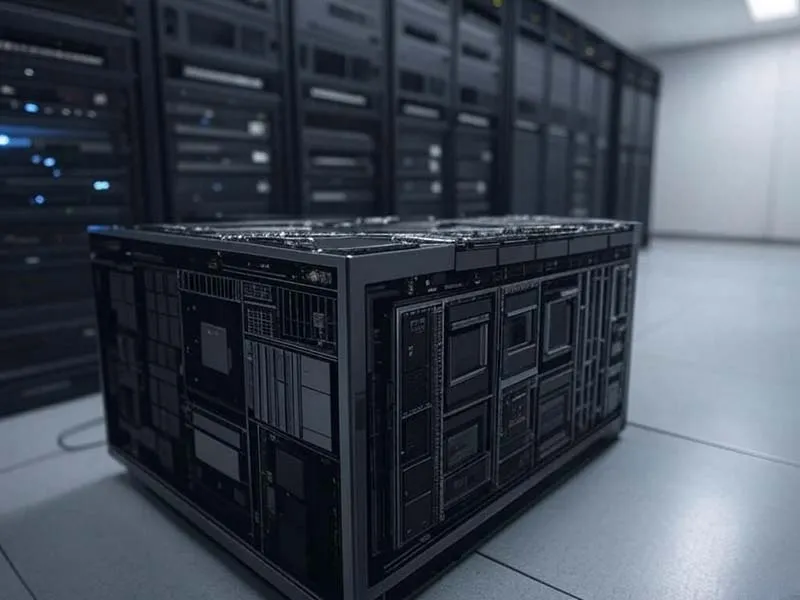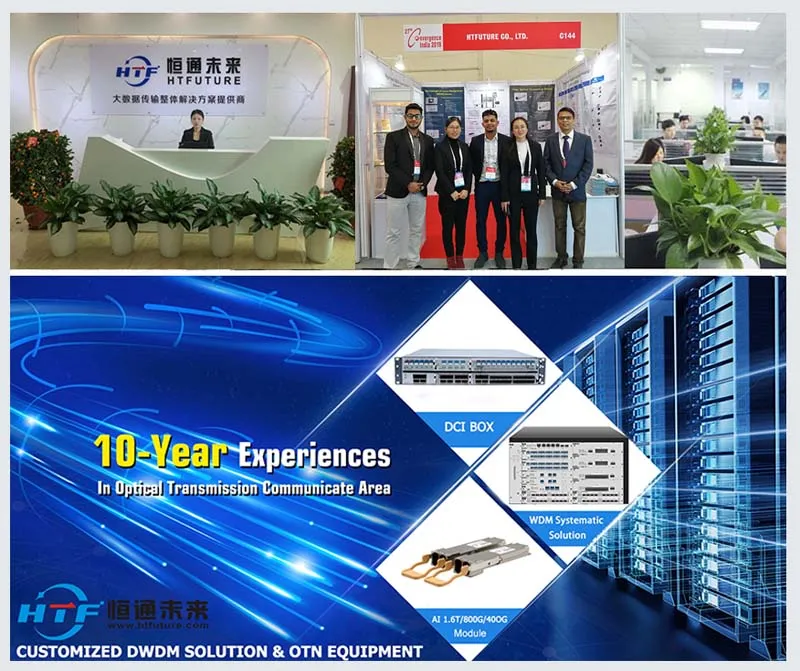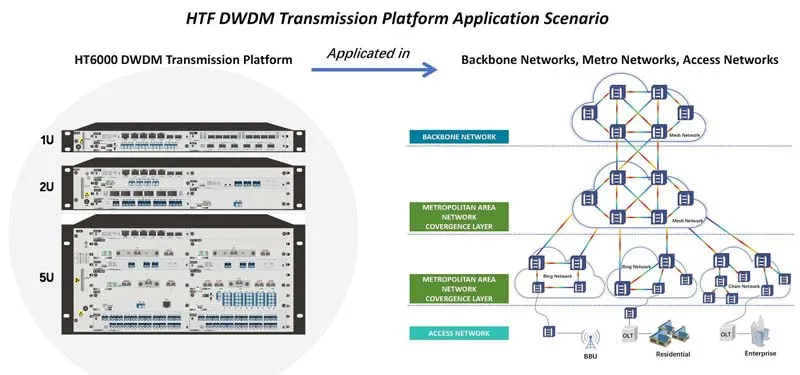The tidal wave of artificial intelligence has propelled the training needs of large-scale AI models to unprecedented heights, igniting a revolution in computational power. The explosive growth of GPU clusters has placed extraordinary demands on optical interconnect technologies, heralding yet another historic opportunity for the optical communications industry. This surge in AI demand not only accelerates the evolution of high-speed optical modules but also fundamentally reshapes the landscape of optical interconnects within and between data centers. Today, two trailblazing AI systems—DeepSeek and Grok 3—are seamlessly integrating into this transformation, underscoring the pivotal role of optical communications in the era of intelligent computing.
AI-Powered Optical Interconnects: Where Computing Meets the Speed of Light
The training of large-scale AI models relies on the synchronized operation of tens of thousands of GPUs, driving an insatiable demand for computational power that has fueled the rapid rise of optical modules. According to the latest data from Cignal AI, since 2023, the shipment volume of 400GbE+ optical modules has soared at an astonishing annual growth rate of 350%, dwarfing the previous compound annual growth rate of 84%. In the first quarter of 2024 alone, approximately 3.5 million units were shipped, with projections estimating over 14 million units for the full year. Even more striking is the leap in 800G optical modules, surging from 1 million units in 2023 to over 9 million in 2024. By 2028, 1.6T optical modules are expected to surpass the combined total of 400G and 800G shipments, signaling an unprecedented acceleration in optical interconnect generational transitions—all propelled by the relentless force of AI computing.
Simultaneously, the power and space constraints of individual data centers can no longer keep pace with AI’s ambitions, necessitating the construction of interconnected, cross-data-center computing facilities. This shift amplifies the demand for pluggable coherent optical modules like 400ZR—projected to grow tenfold by 2025—and accelerates the commercialization of 800ZR and 1600ZR, with the former gaining traction in 2024 and the latter set to launch by 2027. The optical communications industry, brimming with vitality, is stepping boldly into a radiant new spring of the intelligent computing era.
AI Pioneers Empowering Progress: DeepSeek and Grok 3
The explosive growth in AI demand is inseparable from cutting-edge tools. DeepSeek, with its exceptional natural language processing and data analysis capabilities, equips the optical communications industry with precise market forecasts and technical optimization strategies. Meanwhile, Grok 3, xAI’s flagship creation, leverages its robust multimodal analysis and real-time search functionalities to dive deep into optical module design requirements, refine transmission solutions, and enhance fault prediction and system maintenance. The integration of these two AI powerhouses not only boosts R&D efficiency but also injects intellectual dynamism into overcoming technical bottlenecks in optical communications.
For instance, Grok 3 can analyze link impairment data in real time, enabling engineers to swiftly pinpoint issues like dispersion or multipath crosstalk, while DeepSeek mines vast repositories of literature and market insights to guide the development of next-generation 1.6T and 3.2T optical modules. In this fusion of AI and optical communications, innovation accelerates, and the industry’s future shines ever brighter.
Intra-Data Center Optical Interconnects: Breaking Through Technical Frontiers
Within data centers, high-speed optical modules have evolved to architectures like 4×100G (400G), 8×100G (800G), and 8×200G (1.6T), with QSFP-DD, OSFP, and OSFP-XD as dominant packaging formats. SerDes single-channel rates have reached 200G, aligning seamlessly with optical interfaces. The next frontier—single-wavelength 400G—will underpin 1.6T and 3.2T modules, confronting challenges such as device bandwidth, DSP power consumption, and link impairments (dispersion, four-wave mixing, and multipath crosstalk).
AI clusters’ stringent reliability demands elevate the importance of fault prediction and isolation in optical modules. Multi-channel parallel architectures, empowered by elastic channel technology, can rapidly isolate faults, bolstering system resilience. Yet, power consumption remains a pressing concern—in 51.2T switches, optical modules account for nearly 50% of total power usage. The Linear Pluggable Optics (LPO) solution has emerged as a game-changer, eliminating DSPs and integrating equalization techniques to slash 3.2T module power from 40W to 20W, while reducing latency and costs (e.g., an 8% cost reduction for 800G modules). Though LPO sacrifices transmission distance, the LRO scheme offers a balanced approach, retaining DSP at the transmitter for preprocessing, bridging gaps while delivering substantial power savings.
In optical chips, VCSEL, EML, and silicon photonics lead the charge for 400G+ modules. Silicon photonics stands out with low costs and high integration, particularly suited for LPO systems, with its market share poised to rise significantly. Thin-film lithium niobate devices, with their ultra-high bandwidth, also emerge as contenders for single-channel 400G. While Co-Packaged Optics (CPO) and Optical I/O (OIO) promise long-term advantages, their widespread adoption awaits further maturation.
Inter-Data Center Optical Interconnects: Coherent Technology Expands
The rise of intelligent computing centers has escalated bandwidth demands for inter-data center interconnects (DCI). Spanning hundreds of kilometers, DCI relies on coherent optical communication and dense wavelength division multiplexing (DWDM), achieving single-wavelength rates of 1.6T and single-fiber capacities nearing 100T with C+L dual-band systems. Pluggable coherent modules (ZR series) excel in cost and power efficiency, with 400ZR already in wide use and 800ZR and 1600ZR on the horizon. Driven by AI, coherent technology is sinking into shorter 10-kilometer scenarios, vying with direct-detection systems in 1.6T/3.2T applications.
Hollow-core fiber, with its low latency and ultra-wide spectrum potential, holds immense promise for DCI, though its deployment hinges on resolving engineering challenges. Intelligent DCI operations are equally critical, with concepts like autonomous optical networks and digital twins enabling real-time monitoring and global optimization. DeepSeek aids in physical-layer modeling, while Grok 3 refines fault-handling algorithms, propelling optical networks toward unprecedented intelligence.
A New Dawn for Optical Communications: HTF Leads the Charge
The convergence of surging AI demand and optical interconnect advancements has ushered in a golden age for optical communications. As a premier provider of fiber optic products and WDM system solutions, HTF—backed by a team with over a decade of expertise—stands at the forefront, dedicated to building, connecting, and optimizing global fiber infrastructure for data centers, 5G networks, cloud computing, and beyond. Its flexible, tailored collaboration model empowers partners with specialized distinction, meeting diverse needs with professional, swift, and customized services.
The HTF HT6000, a compact OTN system with CWDM/DWDM versatility, supports multi-service transparent transmission and exceeds 1.6T node demands, offering cost-effective WDM expansion for IDC and ISP operators. The HTF VOA adjustable optical attenuator, with its compact size and low power consumption, serves as an indispensable tool for optical equipment maintenance. Meanwhile, the 1.25G-10G OEO converter enhances CWDM/DWDM networks with 3R functionality, optimizing signal relay and intelligent forwarding.
At this historic intersection of AI and optical communications, HTF, with its technical innovation and service excellence, joins hands with the industry to author a dazzling new chapter for intelligent computing’s future.




